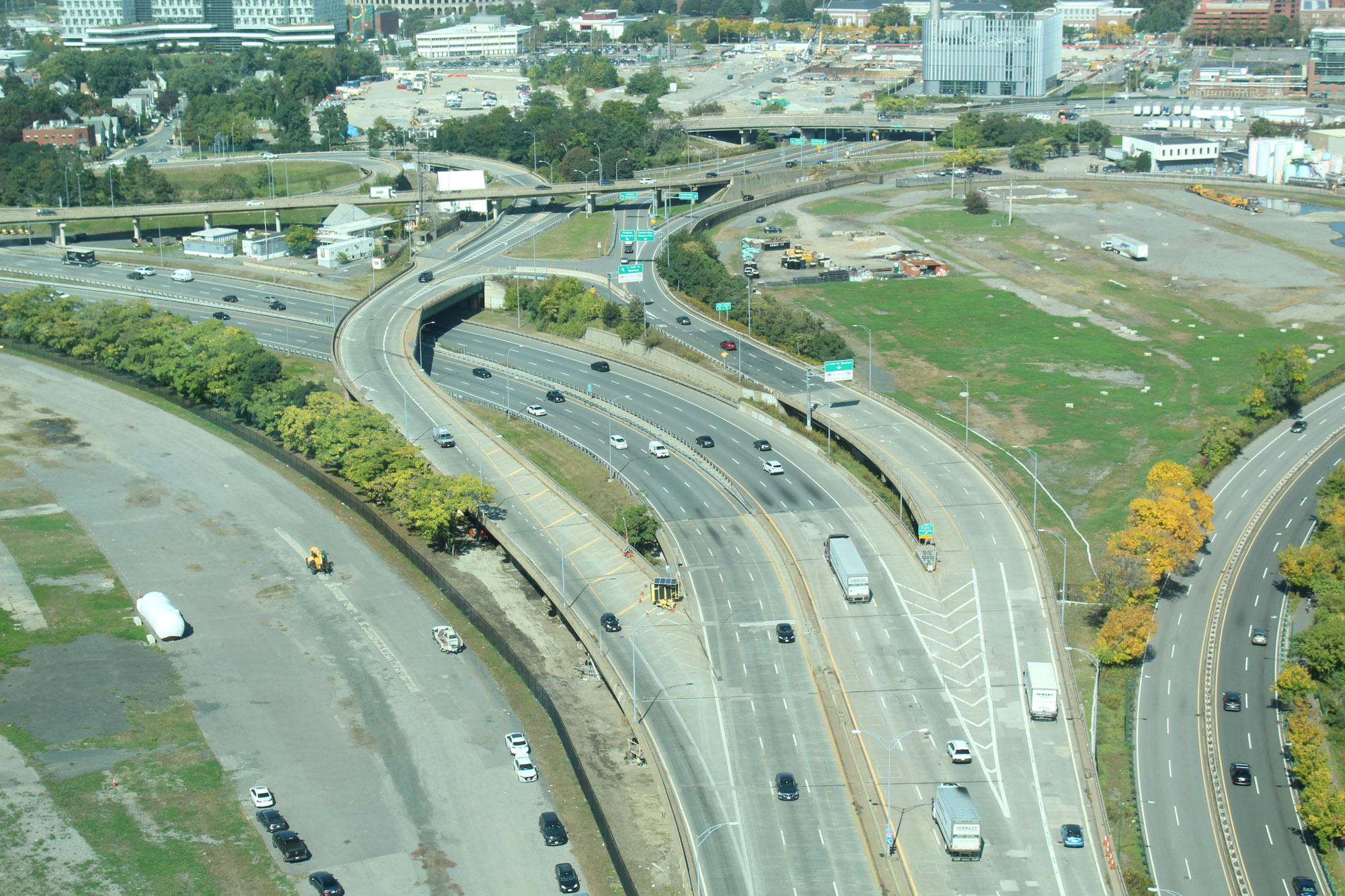Over a decade into its existence, the Allston Multimodal Project remains in the early stages of development, currently undergoing environmental review and awaiting federal funding. If given the green light, the project is expected to reconfigure the stretch of the I-90 through Allston-Brighton, in aims to inspire livability, mobility and economic growth.

The plan to straighten out the Allston interchange aims to create space for new housing and recreation development in the area, introduce new bike and pedestrian lanes and improve transit traffic with the new West station and commuter rail stop, according to the MassDOT project website.
“The Allston Multimodal Project is a once-in-a-generation opportunity to improve the lives and livelihoods of families all across our city and region with safer roads, access to jobs, and new parks and housing,” Boston Mayor Michelle Wu wrote in a statement.
According to the MassDOT project map on their official website, the focus of the construction is the section of the I-90 spanning across Ashford Street, Cambridge Street, the Allston Viaduct, the BU Bridge and the Franklin Street Pedestrian Bridge.
Kate Dineen, president and CEO of A Better City, a non-profit organization that has worked with the City of Boston and MassDOT on this initiative since 2014, said this project is an opportunity to enhance safety and update infrastructure in Boston, such as the Allston viaduct that carries the Mass. Pike through Allston-Brighton, according to WBUR.
“The viaduct itself, it’s kind of this aging relic of the past and is an example of really outmoded transportation policy,” she said. “We have an opportunity to right that wrong in bringing down the viaduct and straightening the roadway.”
In the last two years especially, the multimodal plan has gained momentum and made advancements towards implementation, and will potentially receive the financial backing it needs as early as late February of this year, according to Dineen.
“We’re all kind of waiting with bated breath for a decision on the US DOT … federal grant application that was filed in September,” Dineen said.
While environmental review and funding approval is currently occurring at the state and federal level, Anthony D’Isidoro, the president of the Allston Civic Association and an original task member of the I-90 project, said there are still efforts being made locally to move the project along.
“There’s still work to be done,” D’Isidoro said. “We continue to work with our partners and MassDOT and the city of Boston and Harvard and Boston University and … all those state agencies that are engaged [and] trying to move the project forward.”
Among these local efforts to further the project, the city of Boston, Harvard University and Boston University have pledged to give $300 million in funding, with BU pledging $10 million, according to the Commonwealth Beacon in August of 2023. The plan is estimated to cost $1.9 billion, according to Boston.com.
BU Spokesperson Colin Riley said this project will bring change for the campus for commuting students especially, who would be able to commute to West Station or utilize new bike or pedestrian access.
“The change is for people who make their way to BU,” Riley said. “They may be able to take advantage of it in a more commuter-friendly way.”
As for the Allston and Harvard communities, D’Isidoro said the Mass. Pike project will help fulfill a critical need in the city, including Allston-Brighton, which is suffering from high rents and home prices in a neighborhood that many young people look to live in.
“Beacon Park Yard will be another opportunity to build a world class, mixed use community that has not only housing, residential, but commercial, retail and all of that. So that’s the vision,” D’Isodoro said of Beacon Park Yard, where a new neighborhood will be built according to the BPDA.
The multimodal project aligns with the city of Boston’s efforts to invest in transportation by adding pedestrian and bike connections, as well as improving local and regional transit service.
The multimodal project will bring about many changes for the city of Boston, but residents will have to wait years to witness these changes take effect, with a lengthy construction period predicted should the plan be approved, according to Dineen.
“We anticipate it’s going to be like a six to eight year construction period for the transportation facilities themselves,” Dineen said. “Thoughtful construction staging and robust traffic management measures are going to be imperative and will be implemented to ensure that there’s maintained access to the Pike and also to the rail corridor.”
Aside from timeline and transit concerns, with its proximity to the Charles River and the city’s green initiatives, there are also environmental impact and sustainability aspects of the project to consider.
“This project … is going to have a very big impact on the shoreline where the Mass Pike comes into the city in Allston,” said Laura Jasinski, Executive Director of the Charles River Conservancy and member of the project task force.
The protection of the river has been a priority of the environmental advocacy work the conservancy does at the project, according to Jasinski.
“We really want to think about the river as a priority in this project and having the benefits to the river, and the improvements of its health, not being just a fortunate consequence of the transportation highway infrastructure, but a critical part of the goals of the project,” Jasinski said.
While it’s still a ways off, there are high hopes for this project’s success in Boston.
“In restoring the neighborhood connections lost to hulking highway infrastructure decades ago, Allston will be home to new spaces for community and access to the Charles River, along with a transit hub to serve the entire region,” Wu wrote.























































































































Dennie Flowers • Feb 4, 2024 at 3:44 pm
Thank you to the author. Great communication and great coverage.